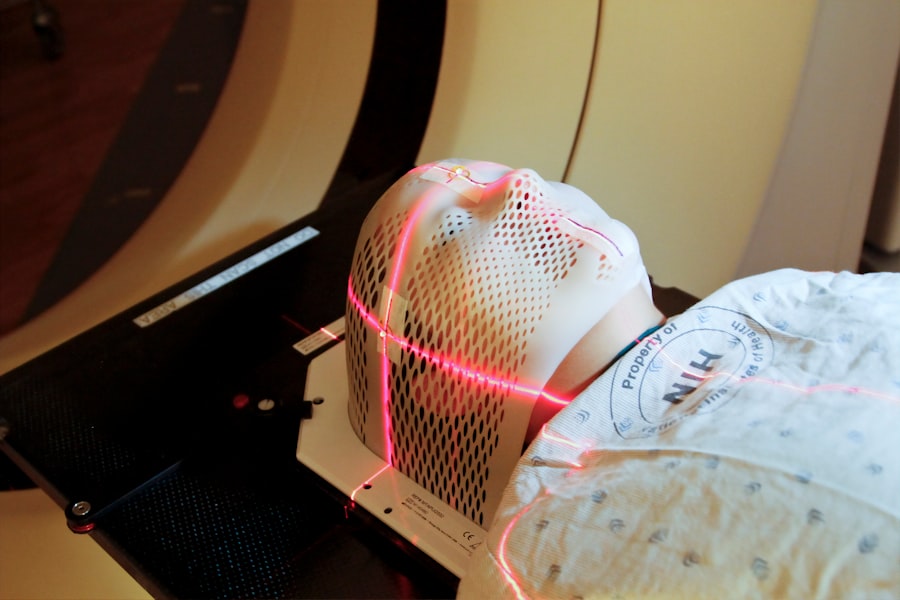Laser hair removal is a popular cosmetic procedure that utilizes concentrated light beams to target and eliminate unwanted hair. As you delve into this field, it’s essential to grasp the fundamental principles behind how lasers work. The process involves the absorption of light by the pigment in the hair follicles, which subsequently destroys them without harming the surrounding skin.
This method is favored for its precision and effectiveness, making it a preferred choice for many individuals seeking a long-term solution to hair removal. In addition to understanding the mechanics of laser hair removal, you should also familiarize yourself with the various types of lasers used in the industry. Different lasers are designed to target specific hair colors and skin types, which is crucial for achieving optimal results.
For instance, the Alexandrite laser is often effective for lighter skin tones, while the Nd:YAG laser is more suitable for darker skin. By comprehending these nuances, you can better tailor your approach to meet the diverse needs of your clients.
Key Takeaways
- Laser hair removal uses concentrated light to target and destroy hair follicles, providing long-term hair reduction.
- Training and certification are required to perform laser hair removal, with specific requirements varying by state and country.
- Hands-on experience and practice are essential for mastering the technique and ensuring safe and effective treatments.
- Different types of laser equipment are available for hair removal, each with its own advantages and considerations.
- Understanding skin types and hair growth cycles is crucial for determining the most effective treatment approach for each client.
- Safety and precautionary measures, such as proper eye protection and skin cooling, must be followed to minimize risks and ensure client comfort.
- Continuing education and skill development are important for staying updated on the latest techniques and equipment in the field.
- Effective time management and scheduling are key for maximizing client satisfaction and business success in laser hair removal.
Training and Certification Requirements
Enhancing Credibility through Certification
By obtaining certification from a recognized institution, you not only enhance your credibility but also ensure that you are well-equipped to provide safe and effective treatments. In addition to initial training, you may also need to stay updated on local regulations regarding laser use. Some regions require specific licenses or certifications that demonstrate your proficiency in operating laser equipment.
The Importance of Continuous Education
Engaging in continuous education will not only keep you compliant with legal standards but also enhance your expertise in the field. This commitment to learning will ultimately benefit your clients, as they will receive care from a knowledgeable and skilled practitioner.
Staying Compliant with Regulations
Staying updated on local regulations regarding laser use is crucial to ensure that you are providing safe and effective treatments. By doing so, you can avoid any legal issues and maintain a high level of professionalism in your practice.
Hands-On Experience and Practice

Gaining hands-on experience is a crucial step in mastering laser hair removal techniques. While theoretical knowledge provides a solid foundation, practical application allows you to refine your skills and build confidence. Many training programs offer supervised practice sessions where you can work on models or fellow students under the guidance of experienced instructors.
This real-world experience is invaluable, as it helps you understand how to adjust settings based on individual client needs and respond to any unexpected challenges that may arise during a session. As you progress in your training, consider seeking additional opportunities for practice outside of formal education. Internships or apprenticeships at established clinics can provide you with exposure to a variety of clients and hair types.
This experience will not only enhance your technical skills but also improve your ability to communicate effectively with clients about their expectations and concerns. The more hands-on experience you accumulate, the more adept you will become at delivering safe and effective laser hair removal treatments.
Learning the Different Types of Laser Equipment
| Laser Equipment Type | Application | Power Output | Wavelength |
|---|---|---|---|
| Gas Lasers | Industrial cutting, welding | 10-100 kW | Visible, UV, IR |
| Solid-state Lasers | Material processing, medical | 1-100 W | Visible, IR |
| Diode Lasers | Telecommunications, barcode scanners | 1-20 W | Visible, IR |
| Fiber Lasers | Metal cutting, marking | 10-100 kW | IR |
Understanding the different types of laser equipment available is essential for anyone looking to specialize in laser hair removal.
For instance, diode lasers are known for their versatility and effectiveness on various skin types, while IPL (Intense Pulsed Light) devices offer a broader spectrum of light wavelengths that can be used for multiple skin concerns beyond hair removal.
Familiarizing yourself with these technologies will enable you to make informed decisions about which equipment best suits your practice and clientele. Moreover, it’s important to stay updated on advancements in laser technology. The field of cosmetic dermatology is constantly evolving, with new devices and techniques emerging regularly.
Attending industry conferences, workshops, or webinars can provide you with insights into the latest innovations and best practices. By keeping abreast of these developments, you can ensure that your skills remain relevant and that you are offering your clients the most effective treatments available.
Understanding Skin Types and Hair Growth Cycles
A comprehensive understanding of skin types and hair growth cycles is crucial for successful laser hair removal treatments. Different skin types react differently to laser energy, which means that customizing your approach based on individual characteristics is essential. For example, individuals with darker skin may require specific settings to avoid potential complications such as hyperpigmentation or burns.
By assessing each client’s skin type before treatment, you can tailor your technique to maximize safety and efficacy. In addition to skin types, it’s important to understand the hair growth cycle, which consists of three main phases: anagen (growth), catagen (transitional), and telogen (resting). Laser hair removal is most effective during the anagen phase when hair follicles are actively growing.
Educating your clients about these cycles can help manage their expectations regarding treatment timelines and results. By explaining that multiple sessions are often necessary to achieve optimal results due to varying growth cycles among different hairs, you can foster a better understanding and trust between you and your clients.
Mastering Safety and Precautionary Measures

Safety should always be a top priority when performing laser hair removal treatments. As a practitioner, it’s essential to adhere to strict safety protocols to protect both yourself and your clients. This includes conducting thorough consultations before each session to assess medical history, skin conditions, and any medications that may affect treatment outcomes.
Additionally, ensuring that all equipment is properly maintained and calibrated is crucial for minimizing risks associated with laser use. You should also be well-versed in precautionary measures such as wearing protective eyewear during treatments and advising clients on post-treatment care. Educating clients about potential side effects, such as redness or swelling, can help set realistic expectations and promote a positive experience.
By prioritizing safety and transparency throughout the process, you can build trust with your clients and establish a reputation for providing high-quality care.
Continuing Education and Skill Development
The field of laser hair removal is dynamic, with ongoing advancements in technology and techniques. To remain competitive and provide the best possible service to your clients, engaging in continuing education is essential. Many professional organizations offer workshops, seminars, and online courses that focus on new developments in laser technology, safety protocols, and treatment techniques.
By participating in these educational opportunities, you can expand your knowledge base and refine your skills. Moreover, networking with other professionals in the industry can provide valuable insights into best practices and emerging trends. Joining professional associations or attending industry conferences allows you to connect with peers who share similar interests and challenges.
These interactions can inspire new ideas for improving your practice while also fostering a sense of community within the field.
Time Management and Scheduling for Laser Hair Removal Sessions
Effective time management is crucial when it comes to scheduling laser hair removal sessions. As a practitioner, you must balance client appointments while ensuring that each session receives the attention it deserves. Developing a well-structured schedule will help you optimize your time while minimizing wait times for clients.
Consider implementing an appointment system that allows for adequate time between sessions to accommodate any necessary follow-up consultations or adjustments. Additionally, educating clients about the recommended treatment intervals can help streamline scheduling. Most individuals require multiple sessions spaced several weeks apart for optimal results due to varying hair growth cycles.
By clearly communicating this information during initial consultations, you can set realistic expectations regarding treatment timelines while also ensuring that your schedule remains organized and efficient. In conclusion, embarking on a career in laser hair removal requires a multifaceted approach that encompasses understanding the technology, mastering safety protocols, gaining hands-on experience, and committing to ongoing education. By focusing on these key areas, you can build a successful practice that meets the diverse needs of your clients while ensuring their safety and satisfaction throughout their hair removal journey.
If you are interested in becoming a laser hair removal technician, you may also want to check out this article on the latest trends in laser hair removal fashion. This article discusses how the industry is evolving and what new techniques and technologies are being used. It can provide valuable insights into the field and help you stay up-to-date on the latest advancements.
FAQs
What is a laser hair removal technician?
A laser hair removal technician is a trained professional who uses laser technology to remove unwanted body hair.
How long does it take to become a laser hair removal technician?
The length of time it takes to become a laser hair removal technician can vary, but typically it involves completing a training program that can range from a few weeks to a few months.
What are the requirements to become a laser hair removal technician?
Requirements to become a laser hair removal technician can vary by state and country, but generally include completing a training program, obtaining a license or certification, and gaining hands-on experience.
What does the training for laser hair removal technicians involve?
Training for laser hair removal technicians typically involves learning about skin anatomy, laser safety, hair growth cycles, and how to operate laser hair removal equipment.
Where can I receive training to become a laser hair removal technician?
Training to become a laser hair removal technician is offered at many beauty schools, vocational schools, and specialized training centers. It’s important to choose a program that is accredited and meets the requirements of the state or country in which you plan to practice.





